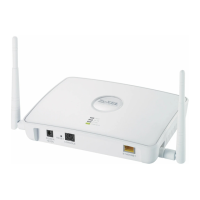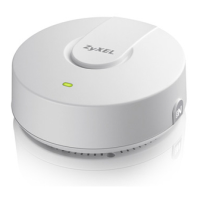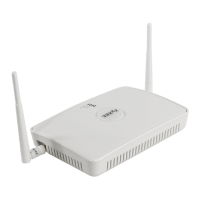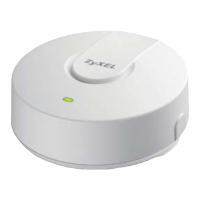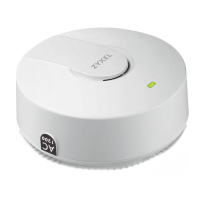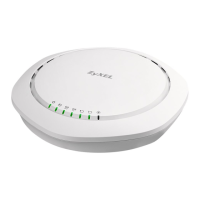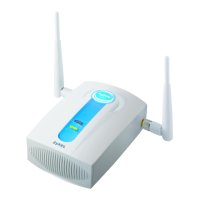
Do you have a question about the ZyXEL Communications NWA-3100 and is the answer not in the manual?
| Frequency Bands | 2.4 GHz |
|---|---|
| Antenna Type | Internal |
| Power over Ethernet (PoE) | Yes |
| Device Type | Wireless Access Point |
| Connectivity Technology | Wireless |
| Spread Spectrum Method | DSSS, OFDM |
| Encryption Algorithm | WEP, WPA, WPA2 |
| Antenna Qty | 2 |
| Ethernet Ports | 1 x 10/100 |
| Data Link Protocol | IEEE 802.11b, IEEE 802.11g |
| Authentication Method | RADIUS |
| Compliant Standards | IEEE 802.11b, IEEE 802.11g, IEEE 802.3af |
| Interface | Ethernet 10/100 |
| Power Device | Power adapter - external |
| Operating Temperature | 0 - 40 °C |
| Storage Temperature | -20 - 60 °C |
| Humidity | 10 - 90% (non-condensing) |
Lists essential safety precautions for device operation, installation, and handling.
Introduces the ZyXEL Device, its features, and management methods.
Explains how to access and navigate the device's web-based configuration interface.
Step-by-step guide to access the device's web-based configuration interface.
Instructions on how to reset the device to its factory default settings.
Guide to setting up multiple wireless networks using MBSSID feature.
Instructions on configuring rogue AP detection and setting up email alerts.
Details how to configure wireless network settings, including QoS and STP.
Explains wireless security methods like WEP, WPA, WPA2, 802.1x, and RADIUS.
Describes configuration of multiple BSSIDs and SSID profiles for flexible networking.
Explains rogue access point detection, configuration, and management.
Covers system status, firmware upgrades, configuration backup/restore, and restarts.
Configuration of system name, domain name, and DNS server settings.
Steps to change the system password for enhanced security.
Details QoS features like WMM and ATC for traffic prioritization.
Covers settings for Access Point, Bridge/Repeater, AP+Bridge, and MBSSID modes.
Details WEP encryption for securing network communications.
Explains the IEEE 802.1x standard for authentication and key management.
Describes EAP for user authentication, often used with RADIUS servers.
Introduces Wi-Fi Protected Access (WPA) and WPA2 security standards.
Explains WPA/WPA2 authentication using 802.1x and RADIUS.
Details WPA/WPA2 encryption methods like TKIP and AES.
Steps to create and assign security profiles to SSID profiles.
Explains MBSSID mode for providing multiple virtual APs simultaneously.
Steps to configure multiple BSSs using MBSSID mode for network flexibility.
Covers SSID configuration, management, and related settings.
Steps to configure SSID profiles with various settings like security and QoS.
Steps to configure Layer-2 Isolation to restrict client access to specific devices.
Details how to configure MAC filtering for controlling device access.
Steps to configure the device's IP address, subnet mask, and gateway.
How to enable and configure rogue AP detection and email alerts.
Settings for log message delivery frequency and alert configurations.
Steps to configure VLANs based on SSID profiles or RADIUS server.
Instructions for uploading new firmware to the device.
Managing configuration files: backup, restore, and factory defaults.
Process for resetting the device to its original factory default settings.
Procedures for managing firmware and configuration files via FTP/TFTP.
Common problems and solutions for device operation and connectivity.
Guide to establishing a Telnet connection to the device.
Steps to change the default system password for security.
Configuration of TCP/IP settings for the Ethernet interface.
Procedure to configure and change the system password.
Procedures for backing up the device configuration using FTP/TFTP/Console.
Procedures for restoring a saved configuration file to the device.
Guide to uploading firmware and configuration files using FTP/TFTP.
Steps to upload system firmware to the device via FTP.
Steps to upload system configuration files to the device via FTP.
Troubleshooting issues related to power, hardware connections, and status LEDs.
Resolving problems with accessing the device and logging into the web configurator.
Troubleshooting issues related to internet connectivity problems.

